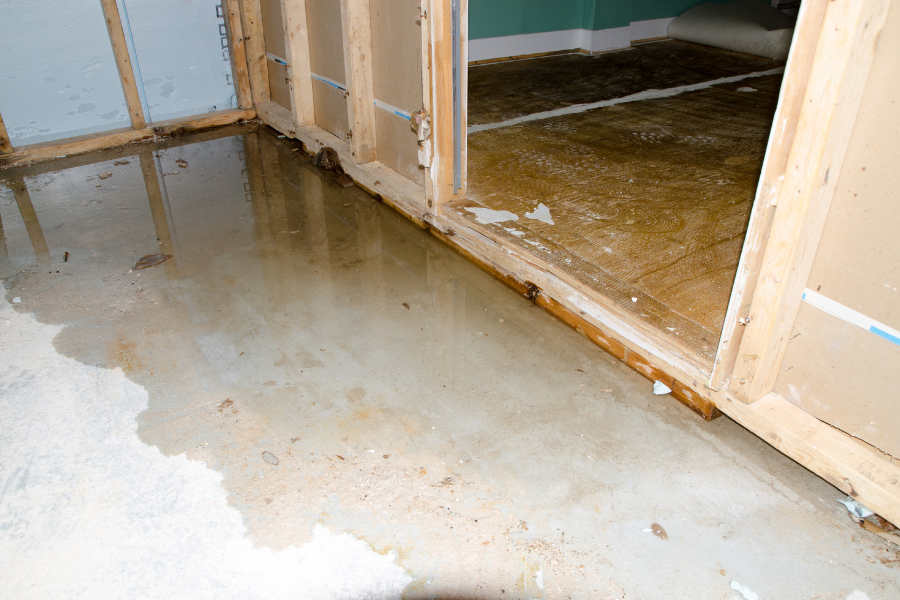You walk downstairs and spot a little water by the wall. Maybe it only shows up after a heavy rain. Maybe it’s just a faint musty smell. No big deal, right?
Wrong.
At Basement Remedy, we’ve been doing this long enough to know one thing for sure: every flooded basement started with a “small issue.” If you think you can ignore occasional dampness or mop up the problem with towels, you’re playing with fire—and we’ll explain why.
Moisture Doesn’t Stay Small
Water in your basement doesn’t fix itself. It grows—literally and figuratively.
What starts as a hairline crack, a single wet corner, or some minor discoloration quickly turns into:
- Mold growth inside your walls
- Rotting wood framing and insulation
- Structural foundation problems
- Damaged belongings and finished flooring
- Higher energy bills due to increased humidity
That “puddle” is your warning light. Ignore it, and you’ll likely end up with a major repair bill down the line.
Humidity Can Do Just as Much Damage
Even if your basement doesn’t have standing water, humidity alone can wreck your space. It softens drywall, saturates carpet padding, and causes wood to swell and warp.
And more importantly: humidity feeds mold. You might not see it at first, but it’s spreading behind walls, under storage bins, and around utility areas.
We’ve seen it happen dozens of times. A homeowner calls for a “quick fix,” and by the time we inspect, there’s black mold in the walls and thousands in restoration costs.
Why DIY Fixes Often Backfire
A lot of people think they can solve the issue with:
- Fans
- Towels
- Waterproof paint
- Plug-in dehumidifiers
- Patch kits or filler foam
We’ve got bad news—none of that fixes the actual problem. You’re treating symptoms, not the cause. Fans don’t dry out foundation walls. Paint traps moisture inside. And patching a crack without addressing hydrostatic pressure or field tile drainage is like slapping duct tape on a busted pipe.
Basement Repairs Get Expensive Fast
Here’s the thing about water damage: the longer you wait, the worse (and more expensive) it gets.
Waterproofing after mold or structural damage is discovered? You’re looking at:
- Full wall removal
- Mold remediation services
- Foundation bracing or excavation
- Sump system upgrades
- Replacing carpet, drywall, and insulation
We’re not trying to scare you. We’re trying to save you from that future.
The Real Solution: Get It Checked Early
One of the best things we offer at Basement Remedy? A free inspection. You call us when you notice an issue—musty smell, water stain, hairline crack—and we’ll take a real look at what’s going on.
Maybe it’s minor. Maybe it’s something simple like rerouting a downspout or fixing a grading issue. Or maybe it’s something more serious. Either way, you’ll know for sure and you’ll have a plan.
We’ve Seen the Worst—and It Always Starts Small
We once worked on a house where water only came in during “100-year rains.” The owners didn’t worry about it for years—until those 100-year rains happened three times in one summer. Their finished basement turned into a swamp. Furniture ruined. Drywall moldy. Insurance? Denied. It cost over $40,000 to fix.
Don’t wait until it gets that far.
Final Thought: Listen to Your Basement
If your basement is trying to tell you something—through smells, stains, or puddles—listen. Waterproofing isn’t just about stopping water. It’s about protecting your health, your investment, and your peace of mind.
Searching online for:
- “how serious is a little basement water?”
- “occasional leaks in basement”
- “moisture on basement walls”
- “DIY basement waterproofing vs. professional”
Let us take a look. It costs you nothing to know—and everything to ignore.




Leave a Reply